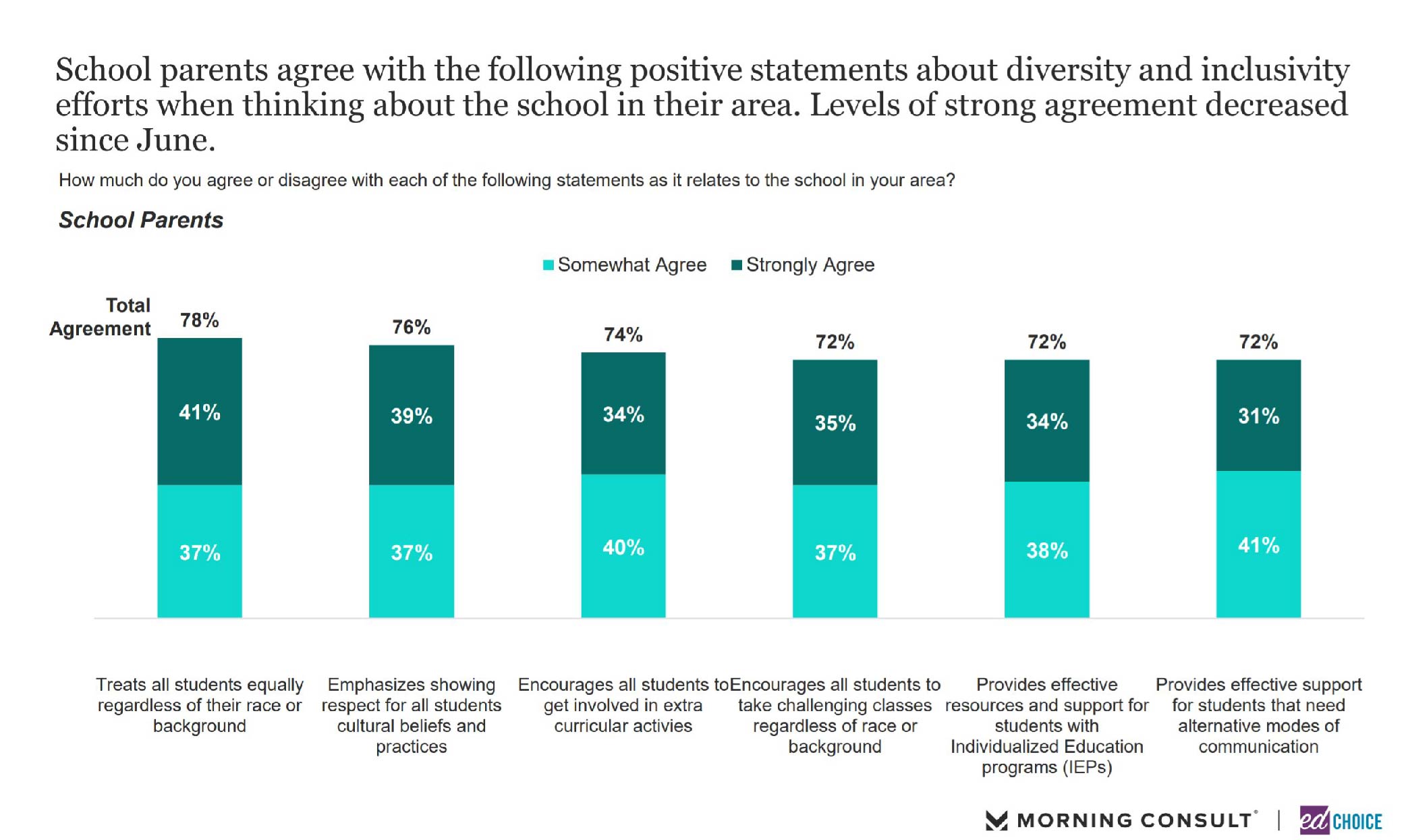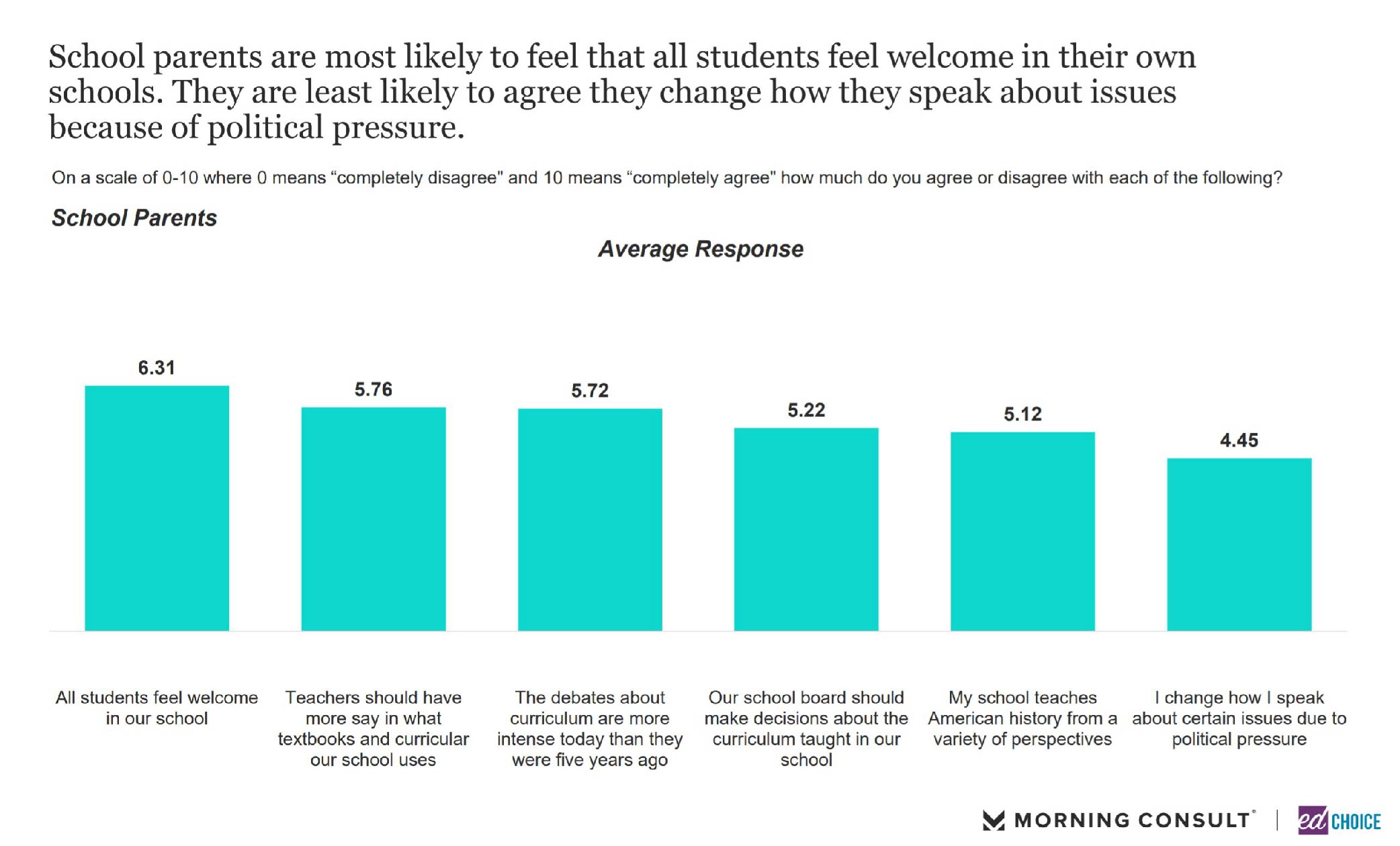EdChoice Public Opinion Tracker: Top Takeaways July 2021
Many families had hoped for a school year that looked more normal than the last one, but it’s clear the 2021-22 school year will not be free of COVID-19 discussions in the United States. As the Delta variant causing outbreaks in some communities across the country, schools and parents both continue to face difficult constraints and decisions. With the new school year upon us, it is helpful to know how Americans are approaching K-12 compared to last year.
Within this context, we survey each month a nationally representative sample of American adults (age 18 or older). Last month we received responses from 2,200 Americans (in the field July 14-20) on a variety of questions regarding K-12 education, the COVID-19 pandemic, curriculum, school choice policies, and numerous related topics. You can access our most recent polling report here. With additional sampling, we obtained responses from 1,228 parents of school-aged children. That oversampling approach enables us to report more reliable information about parents’ opinions by demographic.
In a nutshell: In July, seven out of 10 parents were comfortable with in-person education. We estimate approximately 20 percent of K–12 students will attend a different type of school this school year compared to this time last school year. Optimism about diversity and inclusion in schools, as well as about K-12 education in general, appear to be slightly lower in July than in June. School choice remains very popular among both parents and the general public.
1. Americans feel more affected by COVID-19 compared to June, but most parents are not much more likely to have it impact their schooling decisions this year. Over the course of the pandemic, we’ve asked a variety of questions in an effort to understand how COVID-19 is impacting people’s lives. Despite an upswing in COVID-19 cases largely due to the delta variant, fewer people indicated the pandemic was “very disruptive” to their communities, families, or personal routines than at any other point of the pandemic, at 28 percent, 20 percent, and 20 percent respectively.

Our July survey was not noticeably different from the prior month regarding vaccination rates or plans to get vaccinated.

For the first time since November, parents indicated less comfort with their children returning to the classroom than they did the month prior. That said, at 72 percent, comfort levels are the second highest we’ve recorded since March 2020.

Notably, comfort is about seven points higher among vaccinated parents and six points lower among unvaccinated parents. Eighty-five percent of parents with children who have received a COVID-19 vaccine are comfortable with in-person education.

Just under half of all surveyed adults think teachers should be required to be vaccinated against COVID-19 to teach in person this school year, a belief unaffected by whether a teacher works at a public school or private school. Over a third of all adults think students should be required to be vaccinated against COVID-19 to attend school in-person, once vaccination is available to them. People are more likely to say vaccines should be required than merely encouraged for teachers, but they are more likely to say vaccines should be encouraged rather than mandated for students.

2. Many children are attending different types of school in 2021-22 than they were in 2020-21. We asked parents what kind of school their children attended at the start of last school year as well as the kind of school they would be attending this upcoming school year. Based on parent reports, one out of five children will attend a different type of school this year. Students who were homeschooled last year were the most likely to be attending a different kind of school this year. Specifically, 48 percent of all “switchers” are homeschoolers who will be attending a public district school in 2021-22. We estimate that 57 percent of all switchers this coming year had homeschooled last year. The second-largest switcher group are students who started last school year in public district schools, but who will homeschool in 2021-22.


3. The amount parents are willing to pay for learning pods has returned to levels observed in January. At the beginning of the year, the average parent who said they were participating or were interested in participating in a learning pod said they would pay $423 per child per month. In the following three months, that number jumped 40 percent to $592. In May, the average response dropped to $503. In June, it was $477. This month, willingness to pay for pods was back at $423 per child per month, the same level as it was at the beginning of 2021.

The approximate 10 percent decline in what parents pay/would pay for a learning pod from June to July corresponds with an overall slight decline in pod interest over the past several months. After peaking at 42 percent in April, pod interest sits at 34 percent in July. In coming months, we will see if there are signals that the summer and time away from school might explain any of the recent declines.

4. In July, Americans grew a little more pessimistic about K-12 education. Every month, we ask how people view the direction of K-12 education in their district, their state, and the United States holistically. While remaining at levels comparable to that of last summer, the share of people who think K-12 is moving in the right direction ticked slightly downward from June to July.

In June, we began posing a series of statements regarding diversity and inclusiveness in schools and asked if parents agreed those statements applied to their children’s schools. With the exceptions of “all students feel welcome in our school” and “our school board should make decisions about the curriculum taught in our school,” parents agreed less about each statement than they did in June.


5. School choice remains popular among parents and the general public. Among all surveyed adults, two-thirds support education savings accounts (ESAs) for the second consecutive month. ESA favorability among parents sits at 76% in July.


Private school vouchers saw a slight uptick in favorability among the general population, at 62 percent. Seventy-one percent of school parents support vouchers.


Charter school support among the general population remained at 63 percent this month, while 72 percent of parents support charters.






